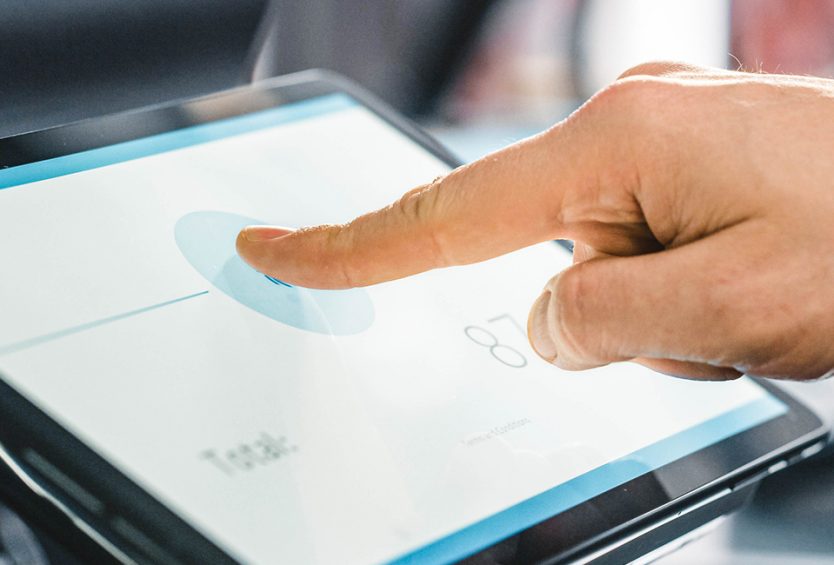A digital working model that combines technology and data will reduce the issues that leaders are worried about, allowing businesses to optimize productivity, govern remotely, and enhance the employee experience. A successful digital workplace will rely on the power of data to support driving business growth decisions cost-effectively, without being unencumbered by physical distance.
Physical office space is strongly affected by the Covid-19 pandemic

As the world responds to the Covid-19 pandemic, enterprises have been rapidly adapting to take advantage of technology that influences their remote workforce. The shift to a digital working environment that used to take months to years can now happen in days or weeks.
However, since we move into the new normal, our concern is whether working remotely in a digital environment is still under necessity.
According to the 2021 Work Trends Index Report from Microsoft, a study of more than 30,000 people in 31 countries was conducted, there are more than 70% of respondents desire to go for remotely working options, and 66% of leaders are considering a digital working model that may allow flexibility in working hours and places (1).
Atlassian – an enormous Australian tech company – has transformed to digital working from now on and plans to hire talent regardless of their geographical location. India’s leading IT companies – Tech Mahindra and Tata Consultancy – have both revealed their long-term remote working plans (2).
The number of jobs that allow remote work has increased sharply in Asian countries such as India by 2.3 times, Australia by 3.4 times, China by 2 times, indicating that this trend will keep continuing after the pandemic (2).
However, for businesses that still follow the traditional way of working, the too fast transition to a new model and the selection of appropriate supporting technology tools cause some leaders to have plenty of concerns such as:
- Productivity may be affected because employees are inexperienced with the digital environment and lack direct support.
- Direct human interaction, employee connection, and the organization’s core culture preservation.
- Negative impact on the ability to innovate and create at work.
- Some principles and culture need to be changed to adapt to the digital working environment.
While remote working still poses many challenges to the traditional way of operating businesses, business leaders should still consider the strategic implications of this form and consider it as a part of the business operating model in a long-term view.
5 benefits of the digital working model
The ability to connect with every employee from every department without being limited by physical distance offers five specific benefits as follows:
- Drive digital transformation process, freely interact with every department of the business both inside and outside anytime, anywhere.
- Streamline and optimize various business processes while complying with industry regulatory standards.
- Collect, share and exchange innovative ideas, driving improvements in a lesser amount of time.
- Enhance employee experience, increase the connection, and enable your organization to maintain competitive advantages.
- Restructure your current workplace which in the long run will produce more skilled employees, a better quality of work, and higher employee retention rates.
How to improve and control business efficiency and operations with an agile digital working model?
A digital working model that combines technology and data will reduce the issues that leaders are worried about, allowing businesses to optimize productivity, govern remotely, and enhance the employee experience. A successful digital workplace will rely on the power of data to support driving business growth decisions cost-effectively, without being unencumbered by physical distance.

Building a digital workplace with the following 4 steps will help businesses succeed in constructing a more agile working environment:
- Migrating current business management systems to the cloud computing platform (Cloud) such as sales system, production system, customer management system, supplier management system.
- This will contribute to reducing the cost of infrastructure investment and operational expenses for businesses and result in active company-wide collaboration in data exploitation and management with better information security.
- Developing system and data security policies will become more essential as most processes are digitized and data is stored in a digital environment. Information is an important asset that businesses must protect. In the context of increasing information security threats, deploying security solutions for organizations becomes even more urgent than ever before.
- Optimizing appropriate support tools for effective remote operation management such as online meeting systems, tools to support setting up automated online workflows, remote teamwork management, statistics and reports for management efficiency, unlimited document sharing and management, automatic signing and approval.
- Building an IT core system with stable, safe and high-speed transmission.
Enterprises need to develop their specific criteria to build a model that best suits their operating model since some tools may be suitable for one business but not effective for another when applied. Each business needs to be equipped with a specific roadmap with compatible solutions associated with business goals at each stage, ensuring sustainable development and achieving desired business goals.
Reference sources:
(1) Microsoft. 2021 The Next Great Disruption Is Hybrid Work—Are We Ready?
(2) LinkedIn Talent Solutions. Is remote work here to stay in Asia-Pacific?



